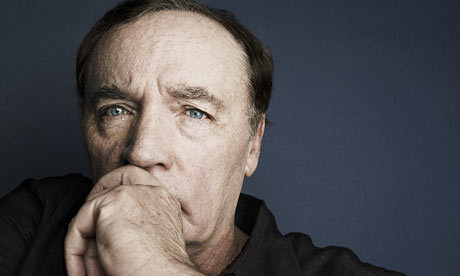A quality author photo is one of the most important aspects of becoming an author, and yet it often slips through the cracks. Indeed, there are some very professional, well done author photos out there, but for as many great ones, there are a plethora of faulty ones. I am not one to use clichés, but as a photographer, I completely agree that a picture does say a thousand words. I look at it this way: If an author is trying to attract readers to read the tens of thousands of words they've spent months or years writing, they should use their best author photo possible.
This is where my experience as a photographer lets me address the author photo from both sides of the lens.
If you spend months or years writing a book, spend at least a day preparing for your author photo, because it is a critical part of your brand. Here is my take on some common problems and their solutions.
Problem: Too serious of an expression.
Some authors' facial expressions are overly serious -- as though such an expression depicts intelligence and print worthiness. Yet, depending on their genre, a serious expression isn't always appropriate.

Solution: Genre considerations.
Before going into a photo shoot, consider your genre and what overall tone it depicts. If you are indeed a romance author, a pleasant expression of contentment is more acceptable than an intense and serious expression. This is one genre that the head tilted to the side and looking off into the distance, works. If you're a thriller writer, go for the intense, James Patterson-type expression. No matter what, keep your expression as natural as possible. A forced expression of any kind will be picked up by the camera.
Problem: Unflattering pose or posture.
When the camera is on you, pay attention to your body language. An author with their arms crossed will come off as defensive. Not everyone is "a natural" in front of the camera, but simple body language concepts go a long way with author photos.
Solution: Depict an inviting image.
A simple change in position can make a big difference. For example, a person's arms crossed over their lap, while leaning into the camera, is more inviting than arms crossed over a chest and standing upright.
One common pose that works is when an author candidly places their hand on their chin or temple. This is surely an expression of thinking, which is true -- thinking about what to write next is a huge part of being an author. Be sure the look is authentic and not forced, which borders on cliché.
Women, as mentioned above, have the habit of tilting their head to the side, gazing at the camera or off into the distance. This does work for certain genres.
Problem: Photo processing.
An image that is off in tone, color, exposure and contrast/brightness, will look unprofessional. These are common problems that are usually fixable by someone who is talented with Photoshop. The ones that frighten me the most, however, are photos where the flash lights up the author's face in all the wrong areas (i.e. forehead and nose).
Solution: Hire a professional photographer.
A professional photographer will help with not only producing a quality image, but they should also be able to assist with body language and posing.
In terms of a color versus black and white image, many old school male authors tend to lean toward black and white. This can be a great choice, and is often more flattering for those who have a few decades behind them. However, if you are a romance author, I believe your photo should be in color. If you're starting to see a trend between the relevance between genre and your author photo, give yourself a pat on the back.
Problem: Cluttered background.
The backgrounds that scream amateur are the ones with merely a white wall behind the author, or worse yet, but still a popular pick, the author standing in front of shrubbery (oops, did I just describe your own author photo?) Don't get me started on the backgrounds with too many distractions, like a plate hanging on the wall next to their head, or curtains that have busy patterns or aren't framed right in the image.
Solution: Find a background that enhances, not distracts from, your portrait.
For the most professional results, it makes sense to hire a professional photographer. One great example is that they will know how to work with depth of field. Using "shallow depth of field" in your image will blur out your background, making you pop. "Large depth of field" keeps everything in the background in focus. A busy background, especially one that is in focus, competes with the main subject -- you!

Final thoughts: An unprofessional author photo sends the wrong message.
I realize that I have mentioned hiring a professional photographer as the solution for some of these problems. The reason is that I strongly feel that being an author is a business, and much like you would hire a CPA to do your books, you should hire a professional photographer to take care of your looks. There are several reasonably priced photographers out there who can do a great job. Don't ask a friend or family member to do it unless they have experience as a photographer.
Lastly, I recommend spending some time browsing Amazon for authors in your genre. Take notice of what their images depict, and use it to create the visual you want to send to your readers.
Note: My own author photo was captured by the talented Doug Ellis at Ribera Beach, C.A.
Follow Heather Hummel on Twitter: www.twitter.com/HeatherHummel
This post originally appeared on the Huffington Post.

No comments:
Post a Comment